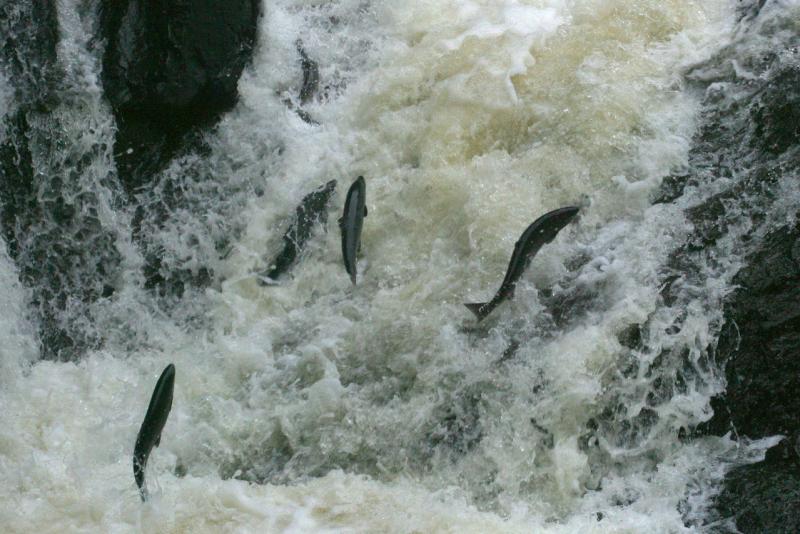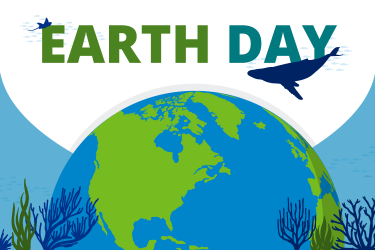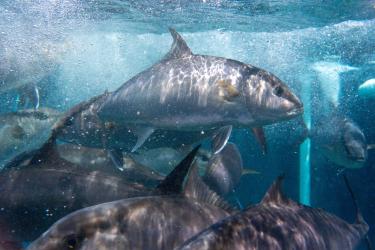NOAA Fisheries has released the results of the 2018 review of NOAA’s fish passage activities within two key programs, the Office of Habitat Conservation's Community-based Restoration Program and the Hydropower Program. The independent, external review panel evaluated the effectiveness of NOAA’s fish passage activities to protect and increase access to historic riverine rearing and spawning habitat for migrating fish species.
Fish passage is important for the protection and restoration of migrating fish and their habitats. NOAA Fisheries restores, opens, and maintains habitats for fish to migrate, or pass. Habitat restoration also helps recover threatened and endangered migratory fish and support the sustainability of economically important commercial and recreational fisheries.
Held in May 2018, the eight-member panel reviewed the goals, prioritization, coordination, effectiveness, and external engagement of NOAA’s fish passage activities for the past ten years. As a result of the review, the panelists identified areas of strength and opportunities to implement changes that would improve upon program successes. NOAA developed a response outlining priority actions that will address the panel’s key recommendations. Implementation of the priority actions will ensure NOAA’s fish passage activities align with agency strengths and will continue to evolve and meet stakeholder needs in the coming years.
Overall, the panel determined NOAA’s fish passage activities are effective in their design, management, execution, and effort invested. The panel also recognized program achievements, including impressive results of miles of habitat accessed and stream miles opened, numbers of projects and groups empowered to complete fish passage projects, and innovative approaches pioneered.
The panel identified a number of opportunities for improvement across our programs. Key recommendations include:
- Increase coordination across NOAA’s relevant programs.
- Increase focus on staff development.
- Integrate prioritization approaches.
- Develop SMART (Sustainable-Measurable-Attainable-Relevant-Time sensitive) goals and objectives for fish passage work.
- Standardize the NOAA Hydropower Program and strengthen its national role where appropriate.
- Increase focus on monitoring efforts.
- Develop a more formalized watershed approach and strategy.
- Increase engagement with NOAA Fisheries Science Centers.
- Increase efforts to diversify and strengthen partnerships.
- Develop targeted messaging for various audiences.
NOAA’s priority actions to address each of the above key recommendations are outlined in the agency’s response to the review. We will work to initiate the priority actions in the next one to two years in an effort to help guide the further evolution of our fish passage programs.
Implementation of the priority actions will better enable us to maintain unimpeded access to habitat where barriers do not yet exist. It will also allow us to open access to habitat where fish are prevented from passing, and ensure that passage for fish is safe, timely, and effective. Ultimately, these efforts contribute to NOAA Fisheries’ priorities to support the Blue Economy. They also support the long-term sustainability of our fisheries to benefit commercial, recreational, and subsistence fishermen, and coastal communities that depend on those fisheries and coastal resources.
Individual Panelist Reports
- Reviewer #1 Report on Fish Passage Program Review (PDF, 12 Pages)
- Reviewer #2 Report on Fish Passage Program Review (PDF, 17 Pages)
- Reviewer #3 Report on Fish Passage Program Review (PDF, 16 Pages)
- Reviewer #4 Report on Fish Passage Program Review (PDF, 11 Pages)
- Reviewer #5 Report on Fish Passage Program Review (PDF, 7 Pages)
- Reviewer #6 Report on Fish Passage Program Review (PDF, 12 Pages)
- Reviewer #7 Report on Fish Passage Program Review (PDF, 12 Pages)
- Reviewer #8 Report on Fish Passage Program Review (PDF, 11 Pages)



